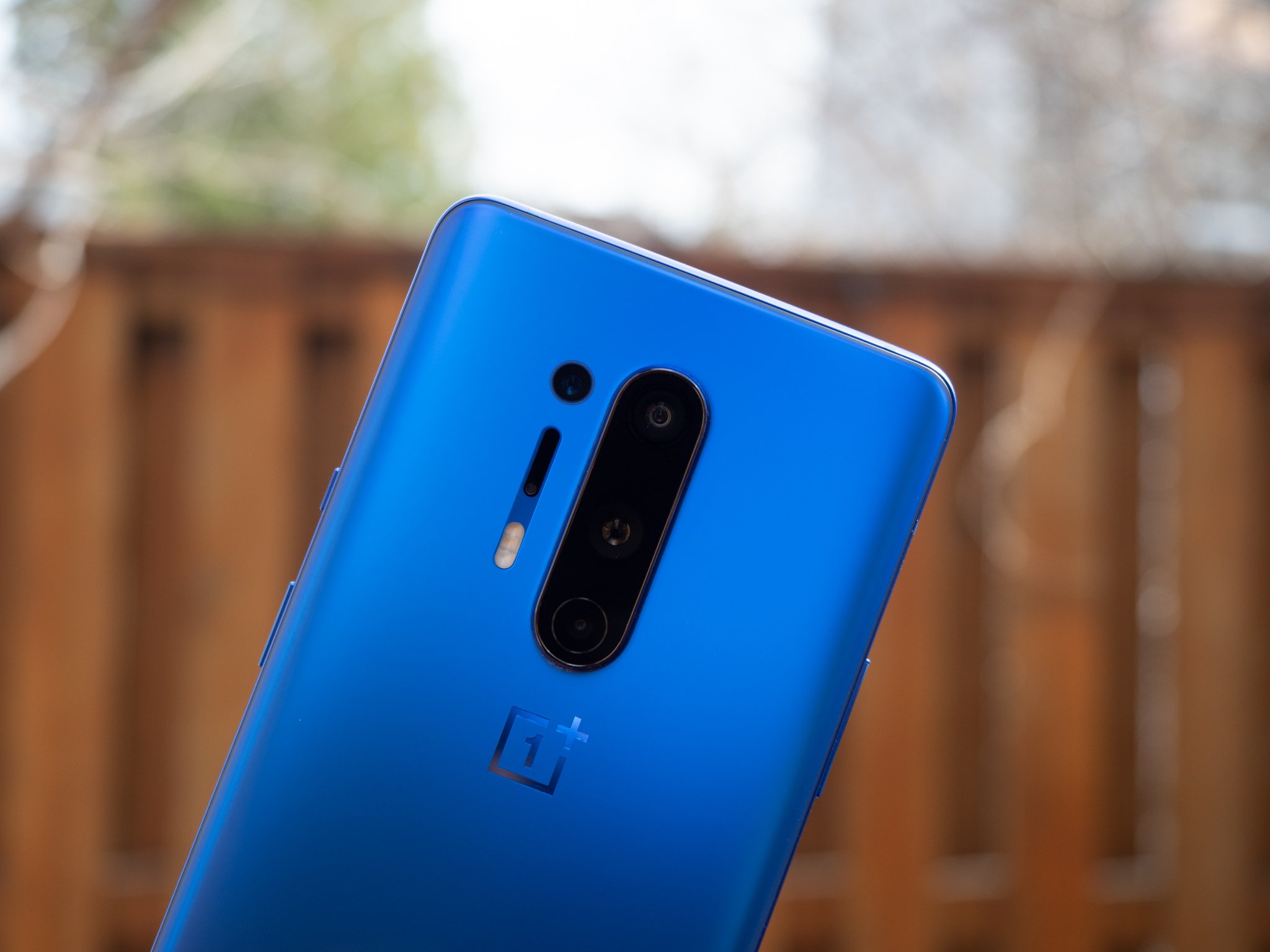Review - ASUS ROG Phone 5 is a next-level gaming phone - Android
ASUS once again shows that it can deliver a gaming phone that stands tall over its rivals.
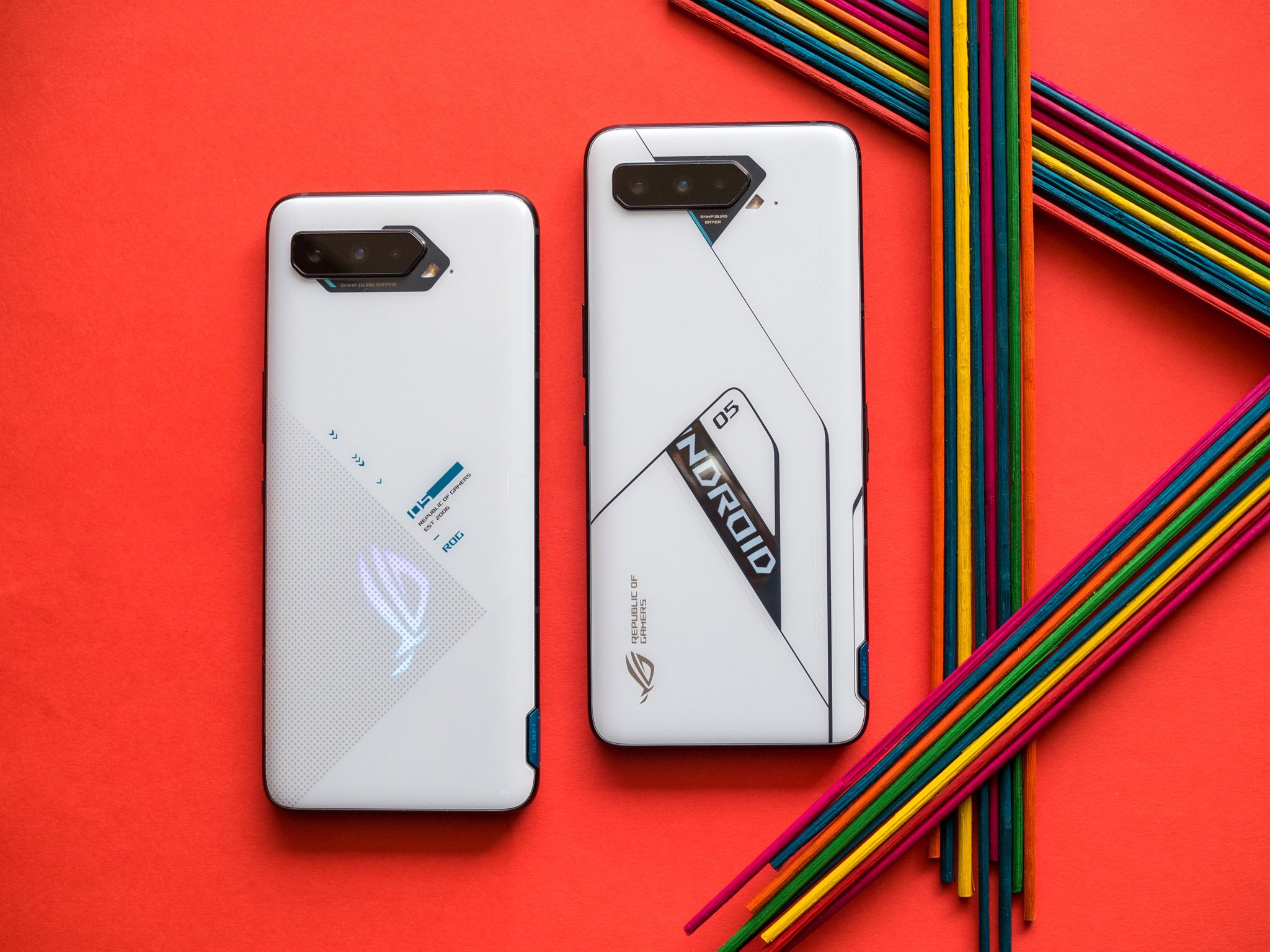
The last three years have democratized hardware; you can get flagship-level performance from mid-range and even a few budget phones today. Qualcomm has introduced several gaming-focused chipsets in the Snapdragon 700 series, and they do a decent job handling the best Android games.
So why should you buy a gaming phone in 2021? Much like the gaming PC category, phone makers have turned to design as a differentiation point for gaming phones. These phones also have better thermal management, unique hardware features that make them stand out from flagship phones, and high(er) refresh rate screens.
The ROG Phone 5 encapsulates these qualities perfectly. The phone comes with a 144Hz AMOLED display, features the Snapdragon 888, has RGB lighting at the back, a new thermal design that promises better gaming performance, ultrasonic triggers that can be set up for in-game actions, and a massive 6000mAh battery with 65W charging.
There's certainly a lot to be excited about the ROG Phone 5, but ASUS isn't just launching one model this time around. The phone is available in Pro and Ultimate versions, with these models featuring a unique second PMOLED display at the back. Oh, and the ROG Phone 5 Ultimate edition is the first phone in the world to feature 18GB of RAM. You don't need 18GB of RAM in a phone, but ASUS is positioning the ROG Phone 5 Ultimate as a celebration to mark its 15th anniversary in gaming.
So if you're looking for a phone for mobile gaming or need a flagship with a high refresh rate screen and gigantic battery, here's why you should consider the ROG Phone 5.
ASUS ROG Phone 5 review:
- Price and availability
- Design and screen
- Performance and battery
- Accessories
- Cameras
- Software
- The competition
- Should you buy?
ASUS ROG Phone 5

Bottom line: The ROG Phone 5 has a stunning 144Hz AMOLED panel paired to the latest internal hardware you'll find today, a gigantic 6000mAh battery with 65W charging, a decent 64MP lens at the back, and clean software. Bring it all together, and you get the best mobile gaming experience in 2021.
The Good
- Class-leading gaming performance
- Unique design with gamer-focused aesthetic
- Amazing battery life with 65W fast charging
- Sublime 144Hz AMOLED panel
- Incredible stereo sound, 3.5mm jack
The Bad
- No IP protection
- Big and heavy
- Faulty fingerprint module
See at ASUS
ASUS ROG Phone 5 Price and availability
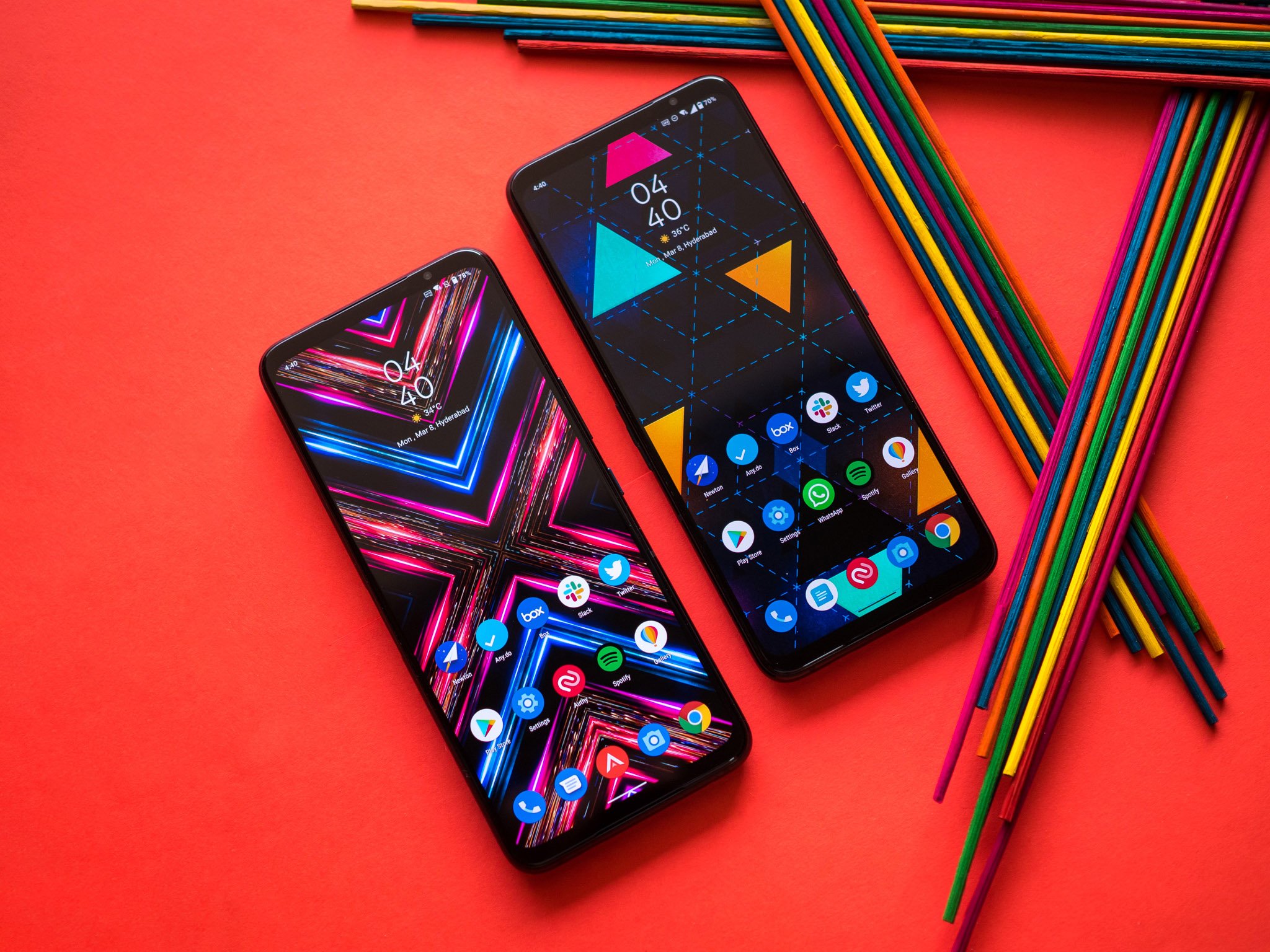
The ROG Phone 5 is available in three variants: the standard model, a Pro version, and an Ultimate variant that will be sold in limited quantities later this year. Availability will vary by region, but ASUS says the ROG Phone 5 can be found in all markets where the ROG Phone 3 was sold, with a North America launch slated for Q2 2021.
The standard ROG Phone 5 is launching in March, and it will be available with 8GB of RAM and 256GB of storage for €799 ($950). There's also a 12GB/256GB version that costs €899 ($1,070) and a 16GB/256GB edition that retails at €999 ($1,190). Over in India, ASUS is selling an 8GB/128GB model that will cost ₹49,999 ($685) and a 12GB/256GB version that retails at ₹57,999 ($795).
The ROG Phone 5 Pro is debuting in April and will be sold in a single variant with 16GB of RAM and 512GB of storage, retailing for €1,199 ($1,425) — ₹69,999 ($960) in India.
The ROG Phone 5 Ultimate is hitting stores in very limited quantities in May. The phone comes with an insane 18GB of RAM and 512GB of storage and will be available for €1,299 ($1,545) and ₹79,999 ($1,095) in India. ASUS calls the ROG Phone 5 Ultimate Edition a celebration for its fans, with a limited set of units available. Once it sells out, it won't be made again.
ASUS ROG Phone 5 Design and screen
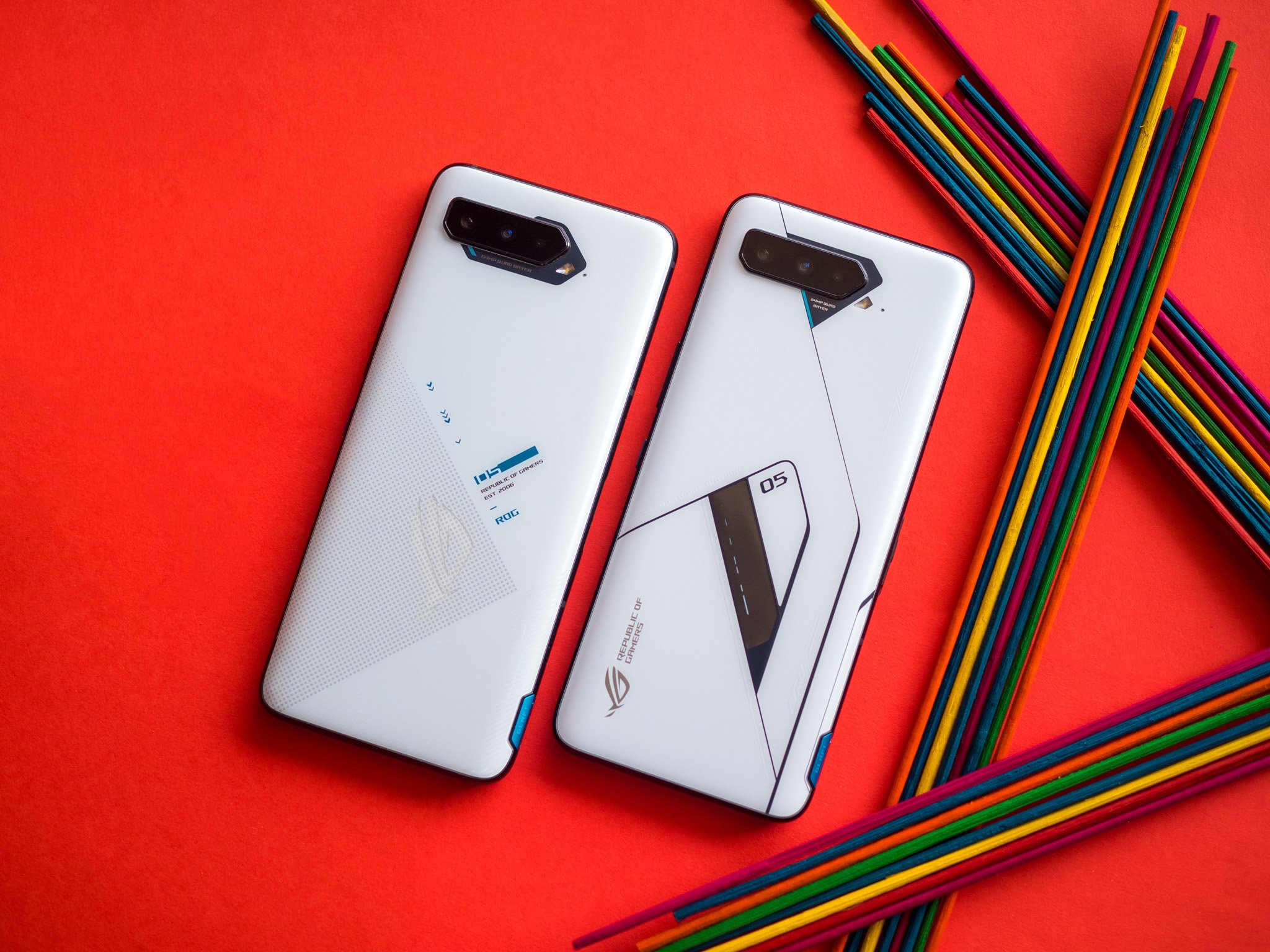
ASUS has a rich heritage in PC gaming, and over the last four years, the manufacturer has done a great job bringing that design aesthetic over to the mobile side of things. The ROG Phone 5 doesn't look like any other phone in the market today; the jagged cutout for the camera module combined with the bold styling elements at the back immediately convey that this is a gaming phone.
The ROG Phone 5 doesn't look like any other phone today — the bold design makes it stand out.
The ROG Phone 5 is available in Storm White or Phantom Black color options and includes a dot matrix design at the back that's similar to the Zephyrus G14 notebook. The design does look striking — particularly in white — and the ROG logo has Aura RGB lighting with the ability to show two colors simultaneously, with eight lighting effects. ASUS doesn't shy away from bold designs, and the ROG Phone 5 is sure to turn heads.
With this generation, ASUS is introducing Pro and Ultimate editions of the ROG Phone 5; these models feature a second screen at the back made out of PMOLED called ROG Vision. The secondary screen lets you customize effects, add notifications for incoming calls, display the time, and more. The ROG Phone 5 Pro has a color PMOLED screen, and the ROG Phone 5 Ultimate comes with a monochrome version.
The regular phone has a glossy back, but the ROG Phone 5 Ultimate edition has a matte white finish. It is similar to the Silk White option of the OnePlus 6 and is a delight to hold and use. Having used both the standard ROG Phone 5 and the Ultimate edition, I prefer the latter's design. The angular lines and the monochrome PMOLED panel make the phone look futuristic, and the matte finish is fabulous to use.
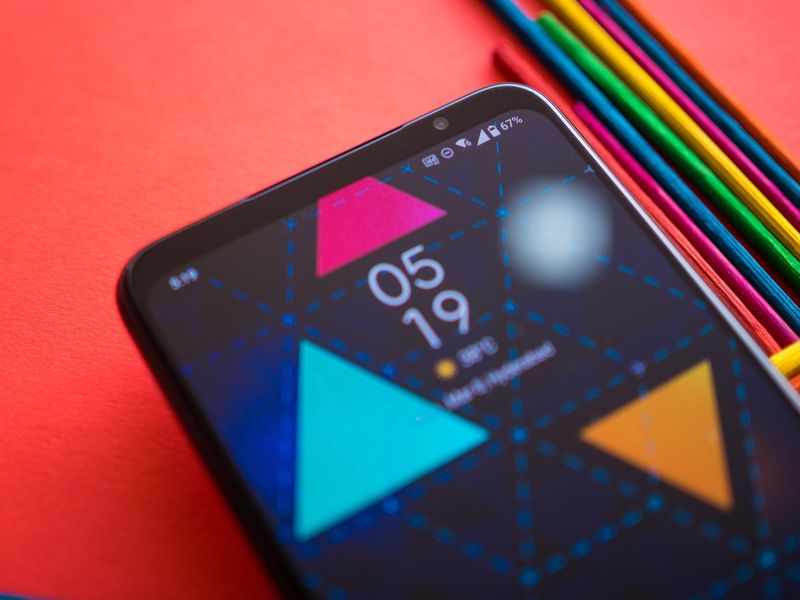

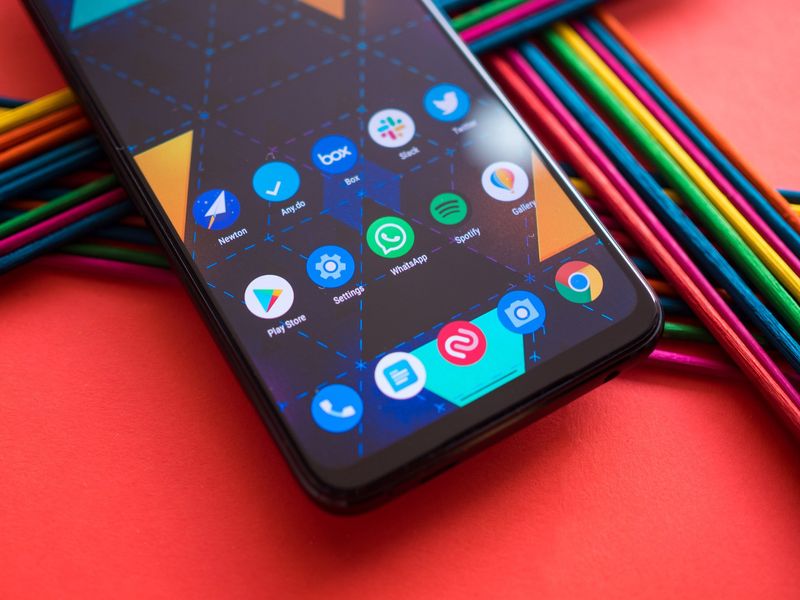
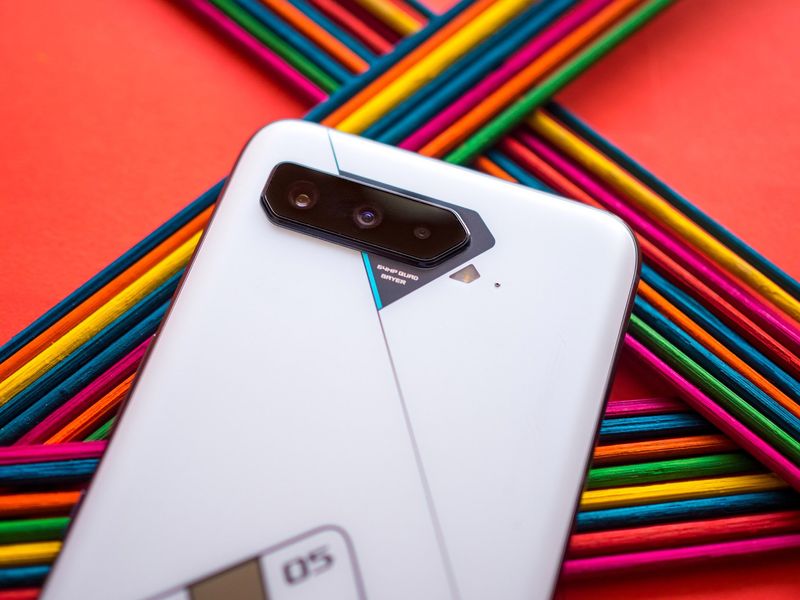


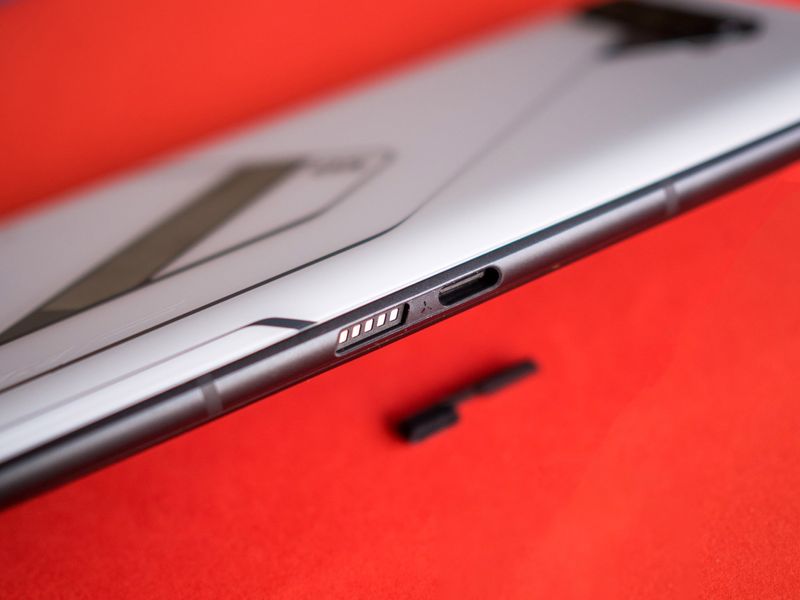
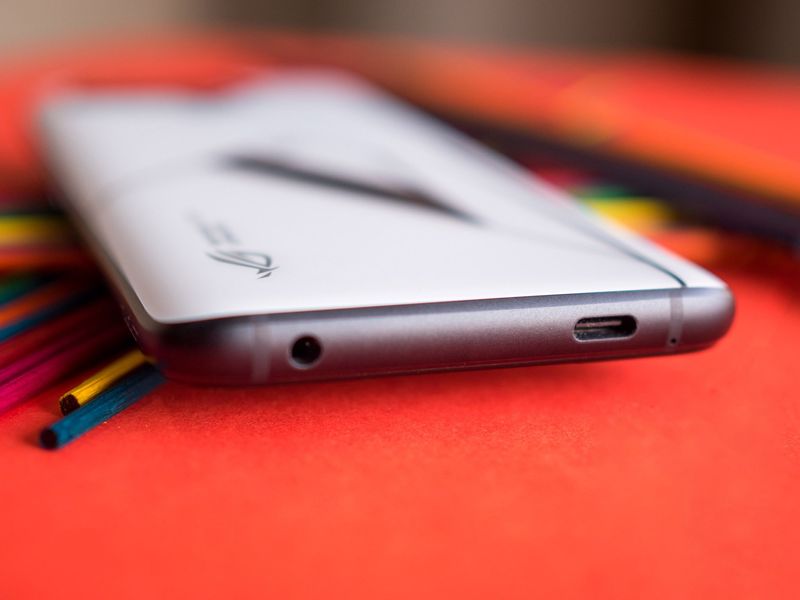
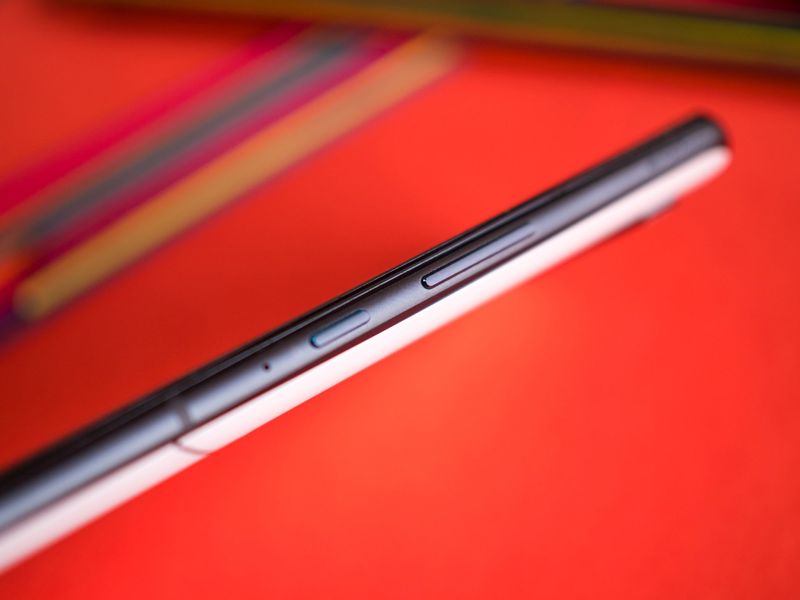
With dimensions of 172.8 x 77.2 x 10.9mm, the ROG Phone 5 is one of the largest and heaviest phones available today. It comes in at 238g, a full 30g heavier than the Galaxy Note 20 Ultra and 42g heavier than the Xiaomi Mi 11. Coming from the Mi 11, it took a while for me to get acclimated to the heft of the ROG Phone 5, but to ASUS's credit, it has nailed the weight distribution. The phone has symmetric bezels at the top and bottom and is optimized for landscape use. The back panel itself is made out of glass on all three models and is protected by a layer of Gorilla Glass 3.
The ROG Phone 5 has subtle curves at the back where it meets the mid-frame, and they make it that much easier to hold the phone. Continuing with the design, the phone has the power and volume buttons on the right — with the power button featuring a blue accent — and it also houses two ultrasonic AirTriggers on this side, at the top and bottom. These are customizable to in-game actions and make a difference. The ROG Phone 5 Pro and Ultimate versions have two additional ultrasonic sensors for AirTriggers at the back.
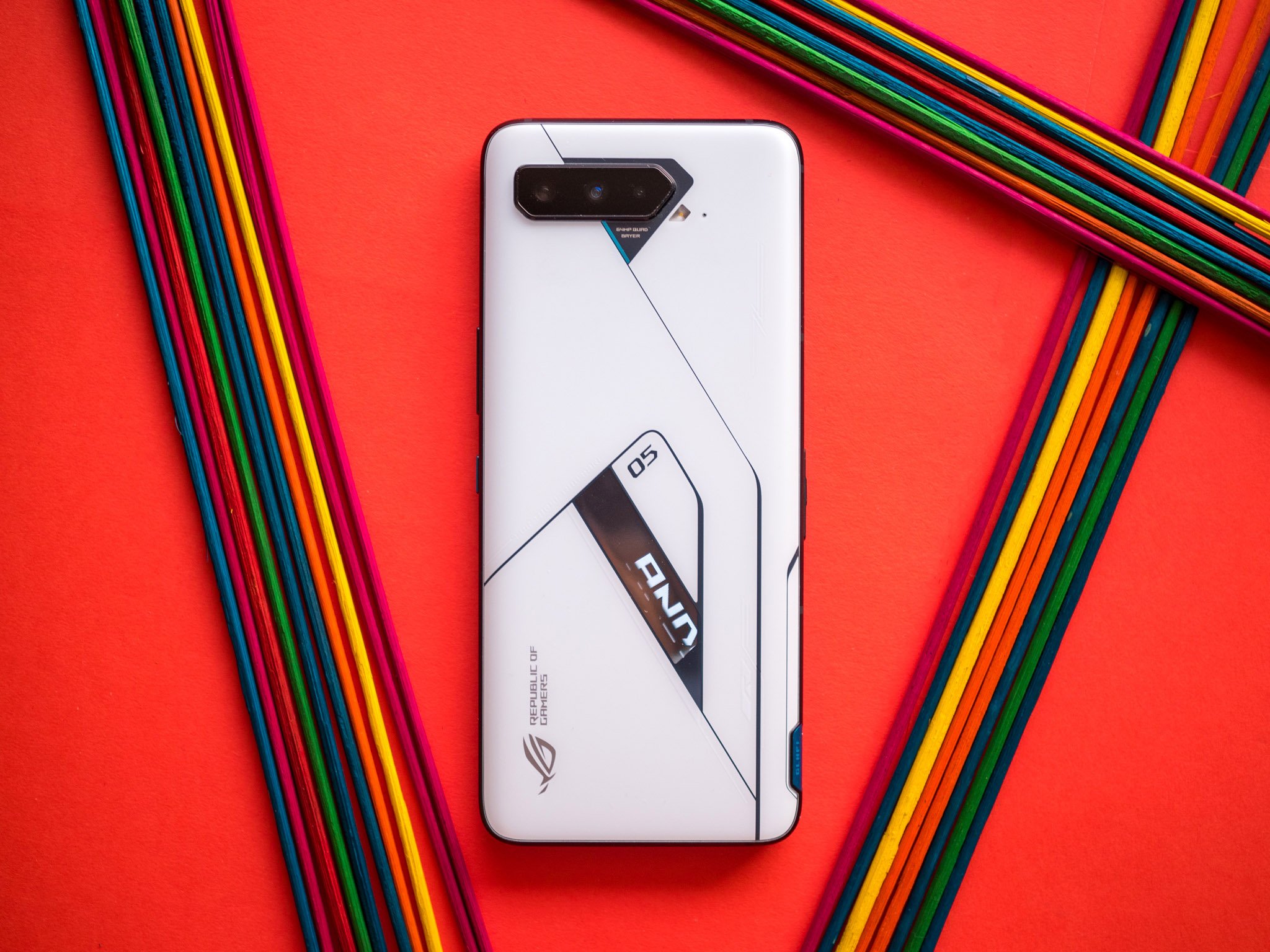
The AirTriggers are particularly handy in day-to-day use as they also facilitate squeeze gestures akin to Active Edge on older Pixels. You can customize gestures for short and long squeezes, and I set up the long squeeze gesture to unlock the camera easily. With Google getting rid of the feature on the Pixel 5, it's great to see that ASUS continues to offer this feature on the ROG Phone 5.
The primary USB-C charging port is at the bottom, and it is located to the left — so it doesn't come in the way when you're charging and using the phone. There is a 3.5mm jack that sits to the right, and it has a built-in DAC that sounds great. You'll find the SIM card slot on the left side of the frame, and the slot itself has a bit of flair to it in terms of design; the white color option comes with a blue-accented SIM card slot, and the black model has a red slot.
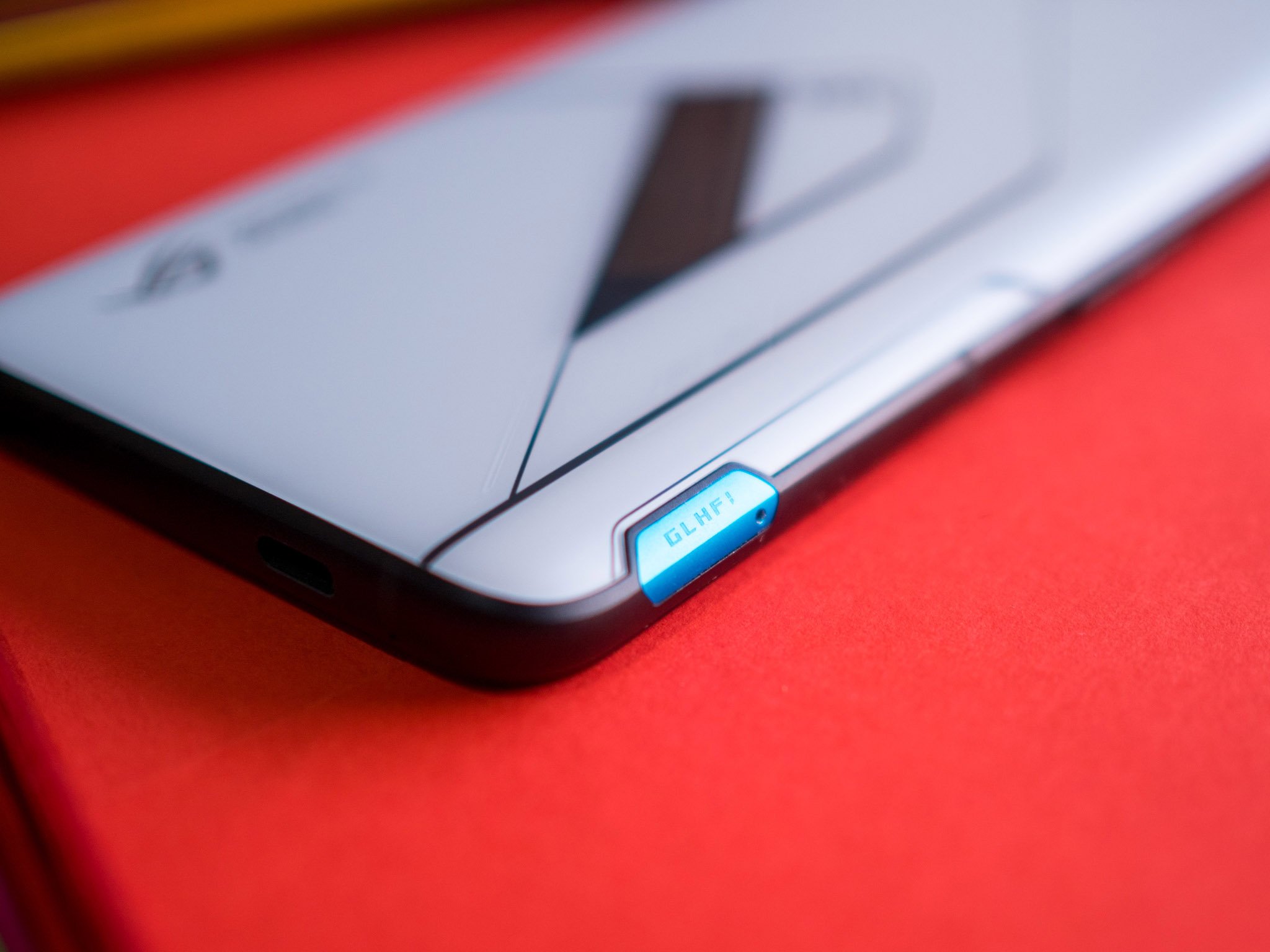
You'll find GLHF (good luck, have fun) inscribed on the SIM card slot, and the slot itself holds two SIM cards. There's a secondary USB-C port located on the left side of the frame that can be used to charge the phone when you're gaming, and it has a 5-pin pogo connector for the AeroActive fan accessory. You'll even find an LED notification light on the top bezel.
Interestingly, the phone has anime-style packaging that allows it to stand out from its rivals. At a time when brands are getting rid of chargers and other essentials from the box, ASUS is going a step further to ensure you don't miss out on the essentials. The phone has a 65W USB PD charger in the box and a silicone case.
The AeroActive cooler is not bundled with the device this time around, so you will have to shell out more cash to get your hands on the cooler if you're buying the regular version. But it is bundled with the Pro and Ultimate editions of the phone, and the Ultimate edition also comes with an additional gift box that includes a hat, ASUS collectibles, a towel (playing games can get sweaty), a playing card deck, and a face mask — all with ROG branding, of course.
Overall, the design feels much more elegant from last year's ROG Phone 3. ASUS did a great job differentiating the ROG Phone 5 from other Android devices in this category and its predecessors.
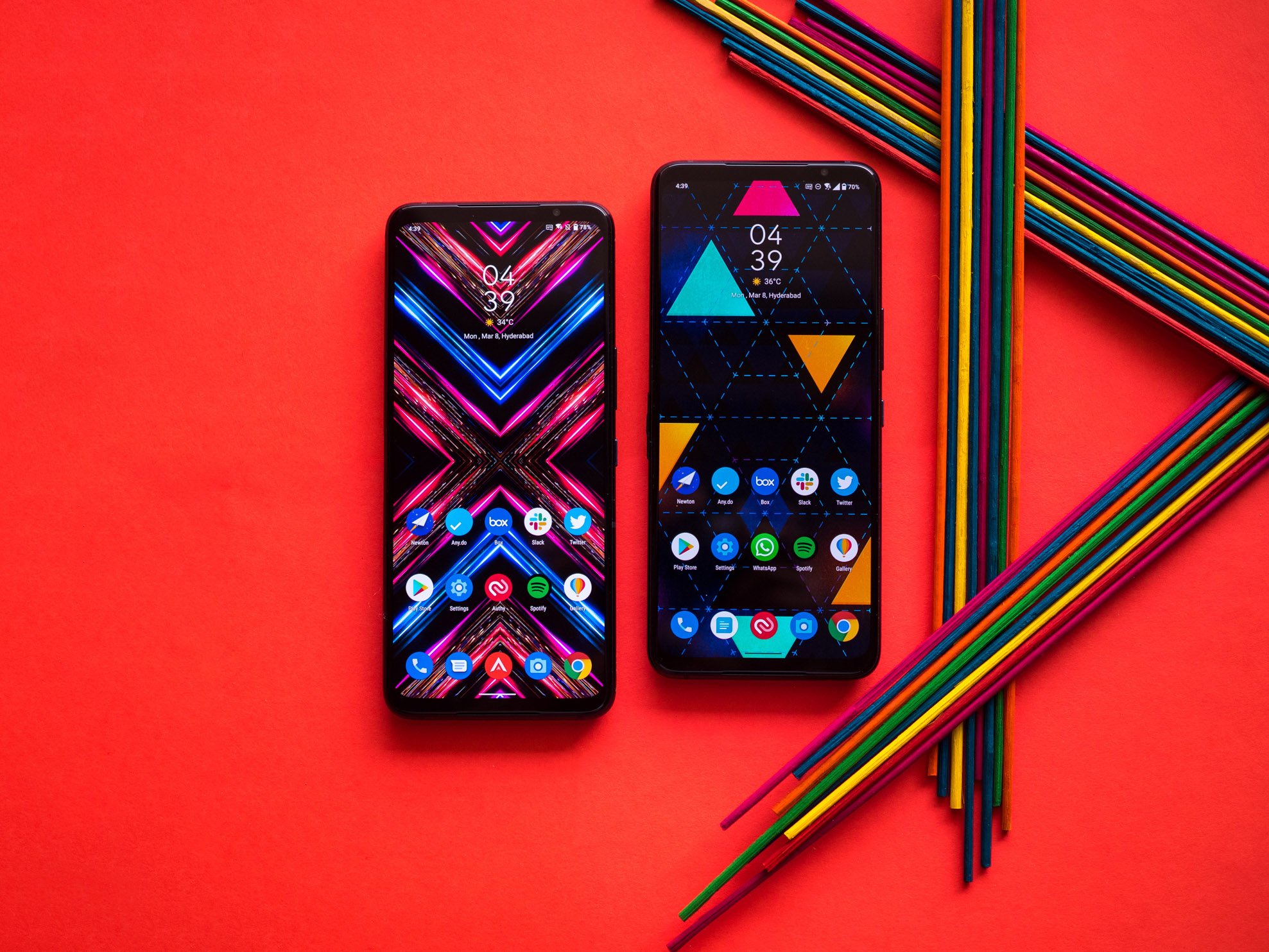
ASUS has retained the 144Hz refresh rate with the ROG Phone 5, but the panel itself is brand new: the phone uses an AMOLED display made by Samsung. The 6.78-inch screen is enclosed in a design with thinner bezels at the top and bottom, and there's no cutout in the screen itself because the front camera is located within the top bezel.
This is one of the best AMOLED panels you'll find today — and not just on a gaming phone.
In day-to-day use, the ROG Phone 5 feels fantastic. The panel gets bright enough even under harsh sunlight and goes down to 5 nits in low-light scenarios. The AMOLED panel has vibrant colors out of the box, and you get a lot of customizability to tune the colors to your tastes. There are five modes to choose from — Default, Natural, Cinematic, Standard, and Customized — and you can also adjust the color temperature manually.
The refresh rate is set to auto out of the box, with the phone dynamically altering the rate based on the use case. For general browsing tasks and scrolling through Instagram and Twitter, you get 144Hz by default. Most games still run at 60Hz, but a decent set of titles take full advantage of the 144Hz refresh rate. For videos and streaming content, the screen falls back to 60Hz.
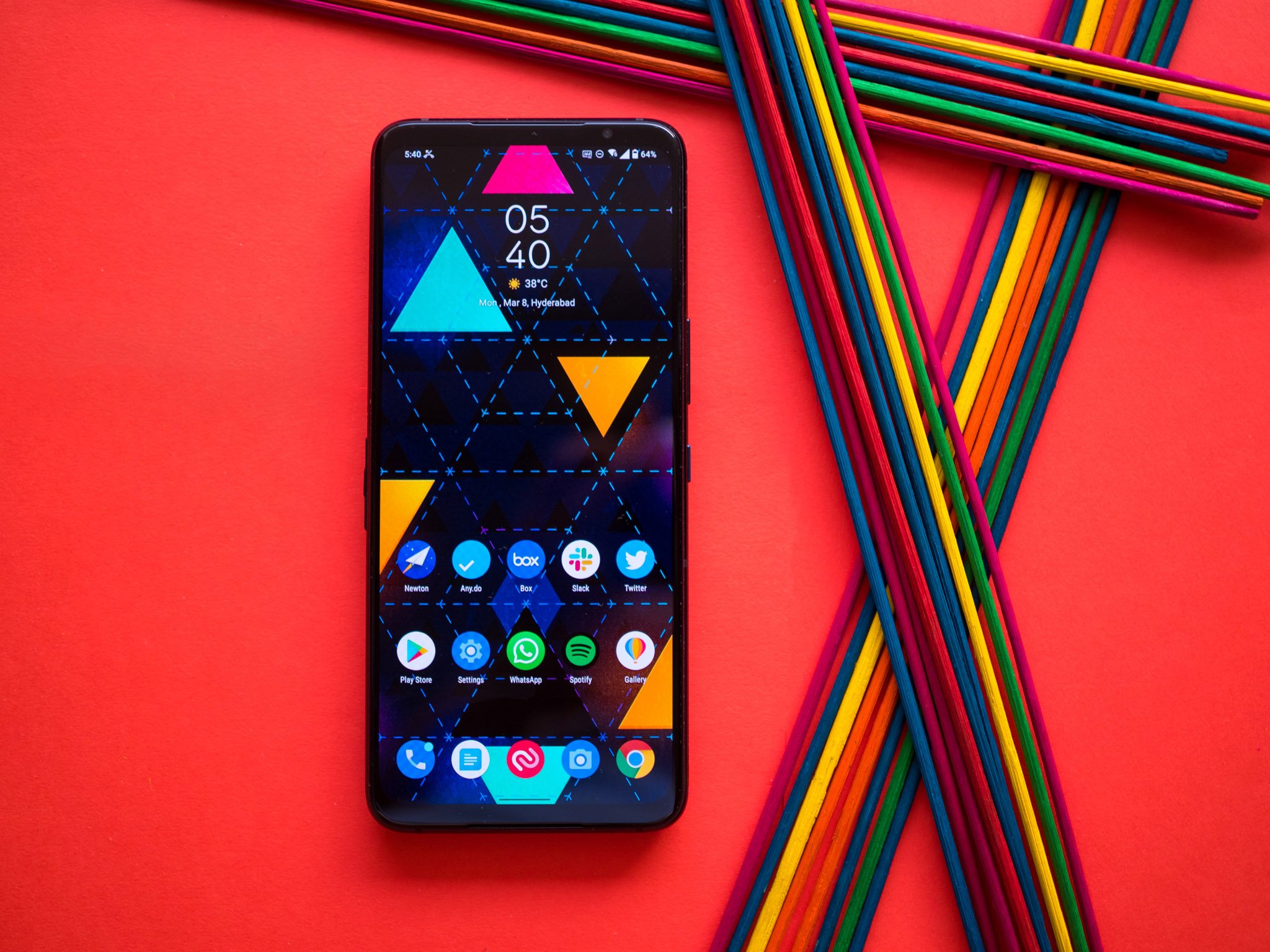
The phone has a wider 20.4:9 ratio, 300Hz touch sampling, touch latency of just 24.3ms, and the panel itself is protected by a layer of Gorilla Glass Victus. There's also an E4 layer that cuts down on blue light emissions. ASUS's differentiator here is the 24.3ms touch latency; the brand optimized the entire pipeline to deliver lower latency than other devices in this category.
The ROG Phone 5 delivers an audio experience that's unmatched today.
As for audio, the ROG Phone 5 has symmetrical stereo speakers, with both the left and right channels of the same size. The speaker size has been increased from the previous generation, and that's immediately noticeable when you're playing a game or streaming a video.
You also get Qualcomm's AptX Adaptive codec as well as LDAC, and the phone has a 3.5mm jack for plugging in wired audio. ASUS has teamed up with ESS to bring a high-end DAC — the ES9280AC Pro — and a headphone amplifier, giving you just that little bit more if you prefer wired audio. The audio itself has been tuned by Swedish outfit Dirac. We've covered Dirac's collaboration with phone makers in the past, and the brand knows how to deliver great-sounding audio from tiny speakers.
Dirac's tech also powers the AudioWizard utility that's located in the settings. It lets you tweak the EQ manually or change individual parameters on-the-fly for a particular use case — music, movies, or gaming. A nifty change this time is that the AudioWizard scenarios are accessible directly from the volume control pane, so you can make the requisite changes just by pressing the volume up or down button and selecting the EQ icon.
Overall, the display on the ROG Phone 5 is a standout. It is perfect for playing games or streaming movies. The visual fidelity of the 144Hz AMOLED panel combined with the excellent stereo sound and high-end hardware makes this a gaming powerhouse.
ASUS ROG Phone 5 Performance and battery
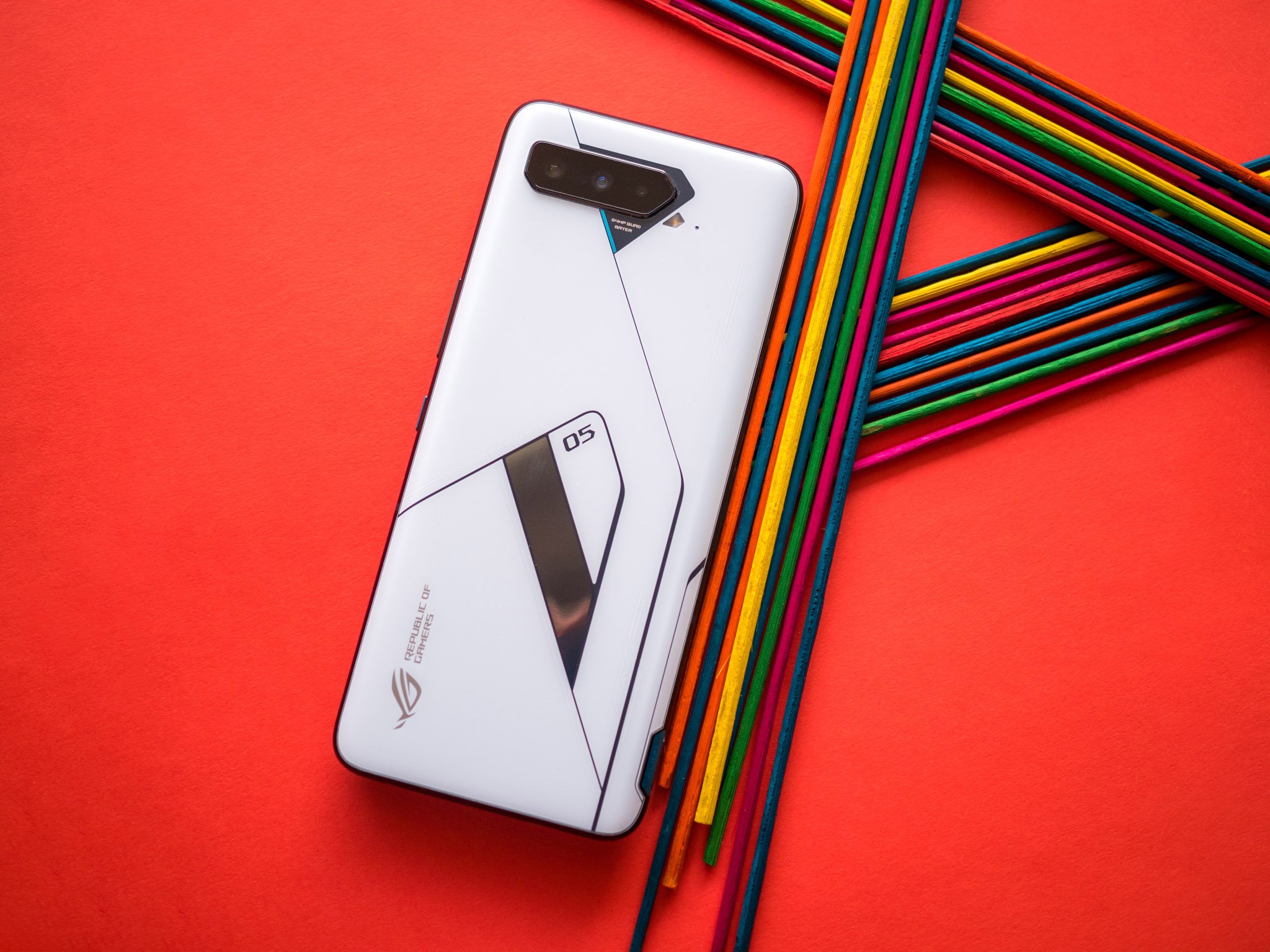
The ROG Phone 5 is one of the fastest phones you can buy today, so it's no wonder that it is powered by the Snapdragon 888. It also features LPDDR5 RAM modules and UFS 3.1 storage as standard and delivers more hardware features than just about any other phone I've used in a while.
| Specs | ASUS ROG Phone 5 |
|---|---|
| Software | Android 11 |
| Display | 6.78-inch (2448x1080) 144Hz AMOLED |
| Chipset | 2.84GHz Snapdragon 888 |
| RAM | 8GB/12GB/16GB/18GB |
| Storage | 128GB/256GB/512GB |
| Rear Camera 1 | 64MP ƒ/1.8 (primary) |
| Rear Camera 2 | 13MP ƒ/2.4 (wide-angle) |
| Rear Camera 3 | 5MP ƒ/2.0 (macro) |
| Front Camera | 24MP ƒ/2.4 |
| Connectivity | Wi-Fi 6E, BT5.2, NFC, AptX |
| Battery | 6000mAh | 65W USB PD |
| Security | In-screen fingerprint |
| Colors | Storm White, Phantom Black |
| Dimensions | 172.8 x 77.2 x 10.2mm |
| Weight | 238g |
With the Snapdragon 888, Qualcomm is offering huge gains across the board. The new X1 core is 25% faster than the A77 cores used in the Snapdragon 865 last year, and the chipset delivers up to 35% better performance in gaming thanks to the Adreno 660. In short, the Snapdragon 888 has enough power on offer to handle any game you throw at it, and that will be the case for at least a few years.
The ROG Phone 5 has an all-new internal design for its GameCool system that puts the chipset in the middle, ensuring that the hot spots — where the heat is the highest — aren't close to your fingers. Combined with the new vapor chamber and graphite sheets for thermal dissipation, you get a device that delivers sustained peak performance.
So how does this translate to real-world usage? The ROG Phone 5 delivers consistent framerates even during extended gaming sessions and does so without getting too hot. I don't normally spend time on mobile games, but I ended up installing and playing Oddmar, Grimvalor, Genshin Impact, Grid Autosport, and other intensive titles for hours on end, and the ROG Phone 5 held its own. It delivered consistent framerates throughout, and there wasn't a noticeable difference even after extended gaming sessions. The AeroActive cooler also does an incredible job siphoning heat away from the phone.
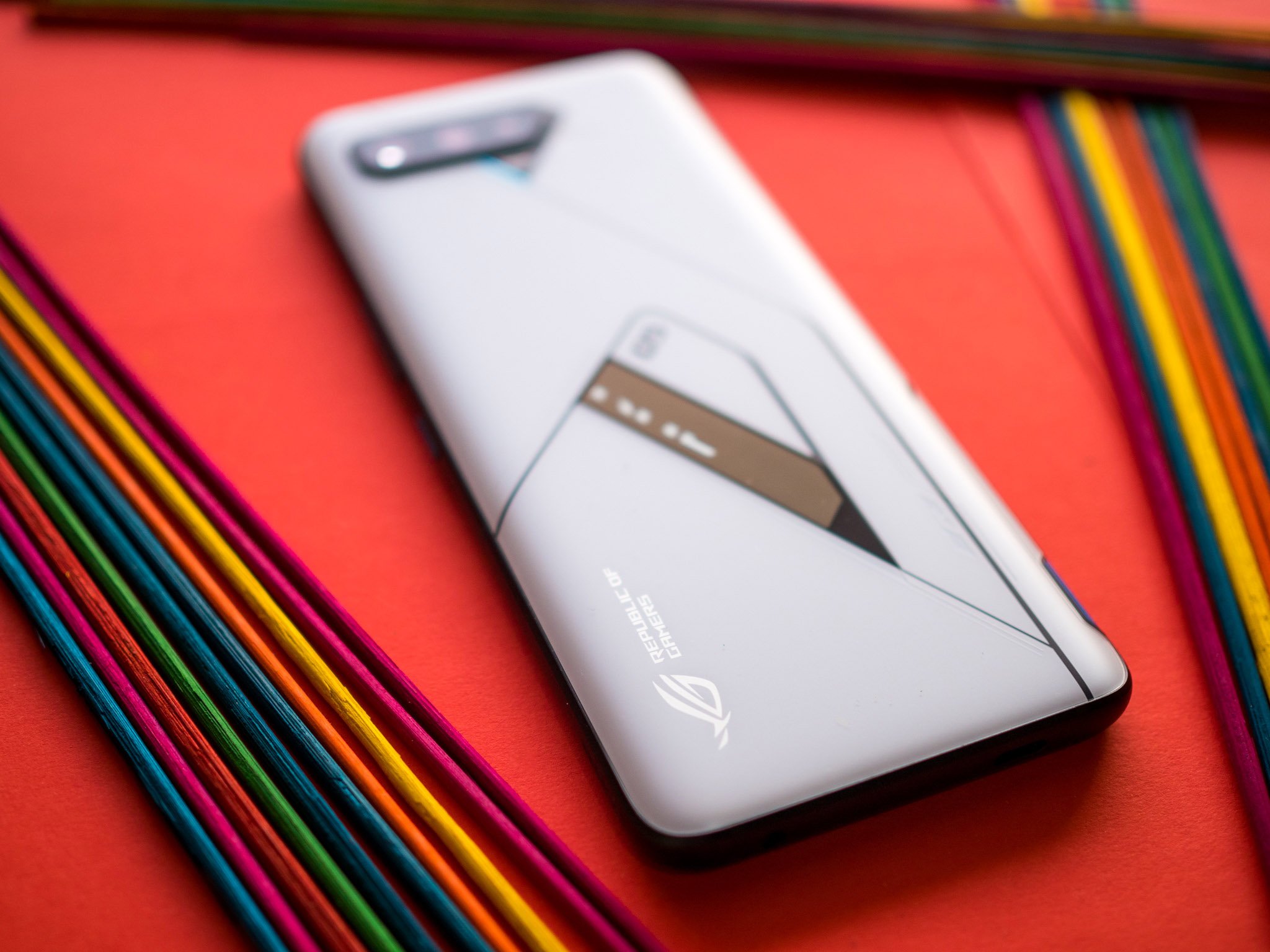
My favorite feature is AirTriggers. The pressure-sensitive buttons let you map actions within a game, and on the ROG Phone 5, they're positioned closer to the edge for easier access. The customizable actions make them a standout for mobile gaming. The AeroActive cooler has two physical buttons this time, giving you that much more flexibility in assigning actions to hardware keys.
The high-end hardware combined with the thermal cooling, vibrant 144Hz panel, and excellent stereo sound makes for a delightful experience. Although the ROG Phone 5 has the same chipset as the best Android phones, ASUS' unique features — including the thermal management, AirTriggers, and the AeroActive cooler — give the phone a distinct edge over the likes of the Galaxy S21 Ultra or the Mi 11.
The ROG Phone 5 delivers steady framerates even during extended gaming sessions.
As you can imagine, there are no slowdowns whatsoever in daily use, and the hardware you're getting here should last several years without any issues. The ROG Phone 5 comes with 8GB, 12GB, and 16GB of RAM and up to 256GB storage, and you get a 16GB/512GB option with the Pro version.
The Ultimate version is the first phone in the world with an insane 18GB of LPDDR5 RAM, with ASUS collaborating with SK Hynix for the module. Of course, you don't need this much RAM — in my usage, memory did not exceed 10GB even with a few games in the background — but ASUS is using the figure as a differentiator.
One of the best features about the ROG Phone 5 is the sheer amount of customization on offer. You get four performance modes that let you set up the hardware for various use cases: X Mode and X Mode+ deliver the best possible performance, with the latter available only when you attach the fan.
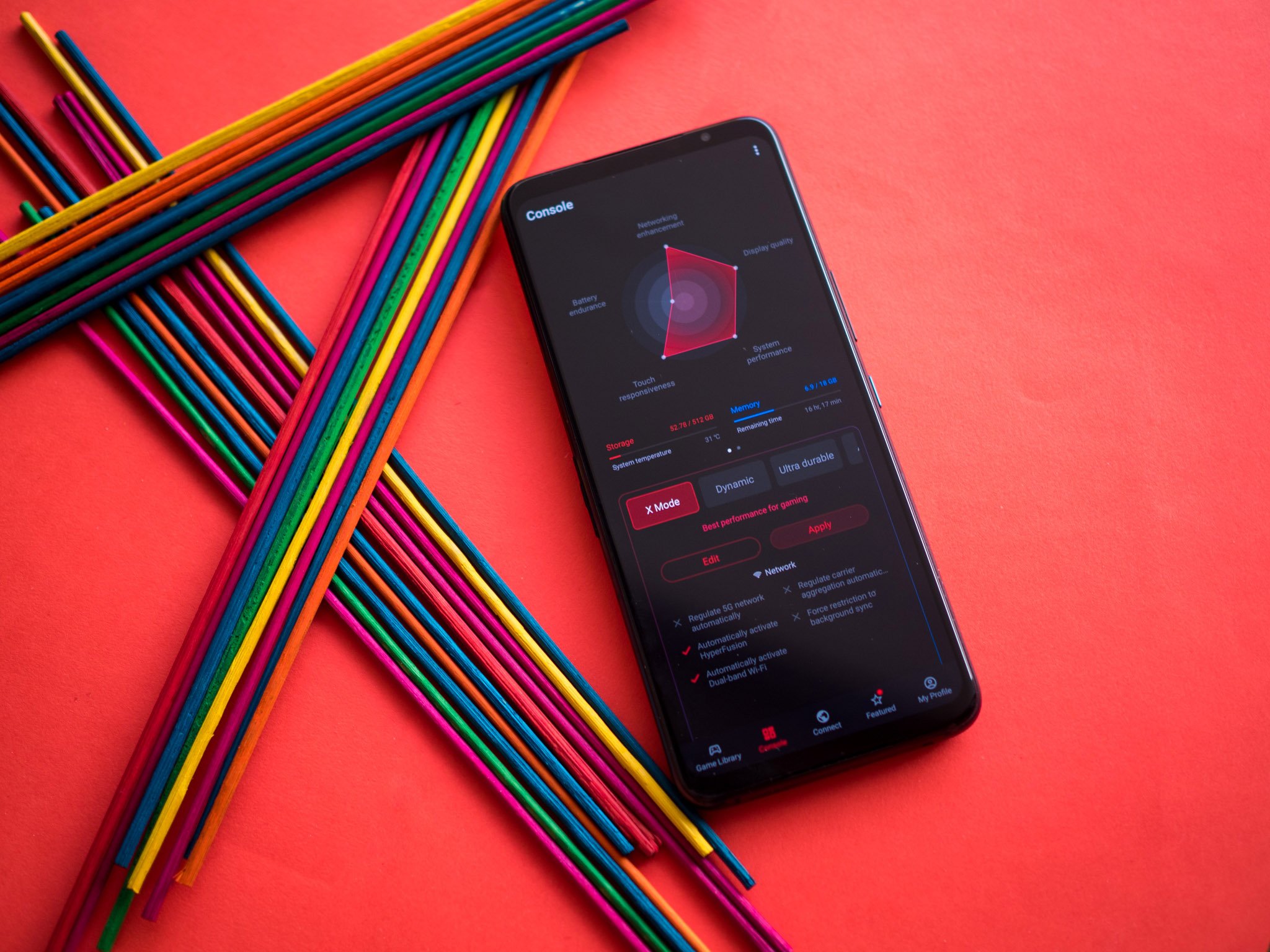
The Dynamic mode is enabled by default, and it delivers the ideal balance between efficiency and performance. If you need to conserve battery life, the Durable mode limits the screen to 60Hz, restricts background activity and networking use, and throttles the Snapdragon 888.
Then there's an Advanced mode, which is particularly interesting because it lets you adjust not just the refresh rate but also the frequencies for the Cortex X1 and Adreno 660 and touch sampling and other features. This is the most comprehensive customization you'll find on any phone today.
Another area where ASUS nailed the brief is haptics. The ROG Phone 5 has a new vibration motor that delivers excellent feedback in day-to-day use as well as gaming. The ROG Phone 5 has Wi-Fi 6E connectivity in select countries. There are three Wi-Fi antennae spread across the phone, and there were no issues with Wi-Fi connectivity whatsoever in my usage. The phone has a nifty dual-band Wi-Fi feature that uses both 2.4 and 5GHz channels to boost connectivity and range, and it works exceedingly well.
There are four mics on the phone, and they do a good job picking up your audio. An interesting addition this time is haptic audio that triggers based on aural events in select games. There's also an esports mode that enables do not disturb, prevents accidental touches, and more. Rounding out the hardware list, you'll find Bluetooth 5.2, NFC, and 5G connectivity, although 5G bands vary by region.

The in-screen fingerprint reader is fast to authenticate, and it worked just fine — until it didn't. Ten days into the review, the fingerprint sensor just glitched out and became unavailable; the area where the recognition zone lights up didn't do so anymore, and I was not able to set up a new fingerprint in the phone's settings.
ASUS says it noticed the issue on a very limited set of units and that a restart usually fixed the problem. However, that wasn't the case on my unit, as it looks like the cable that connects the fingerprint module somehow dislodged in day-to-day use. I've never encountered this particular issue on a phone before, and it's frustrating that the default biometric authentication system could just fail within two weeks.
The one feature that is missing from the ROG Phone 5 is dust and water resistance. There's no IP rating nor protection against dust or water ingress, so you're better off not getting any water on the device.
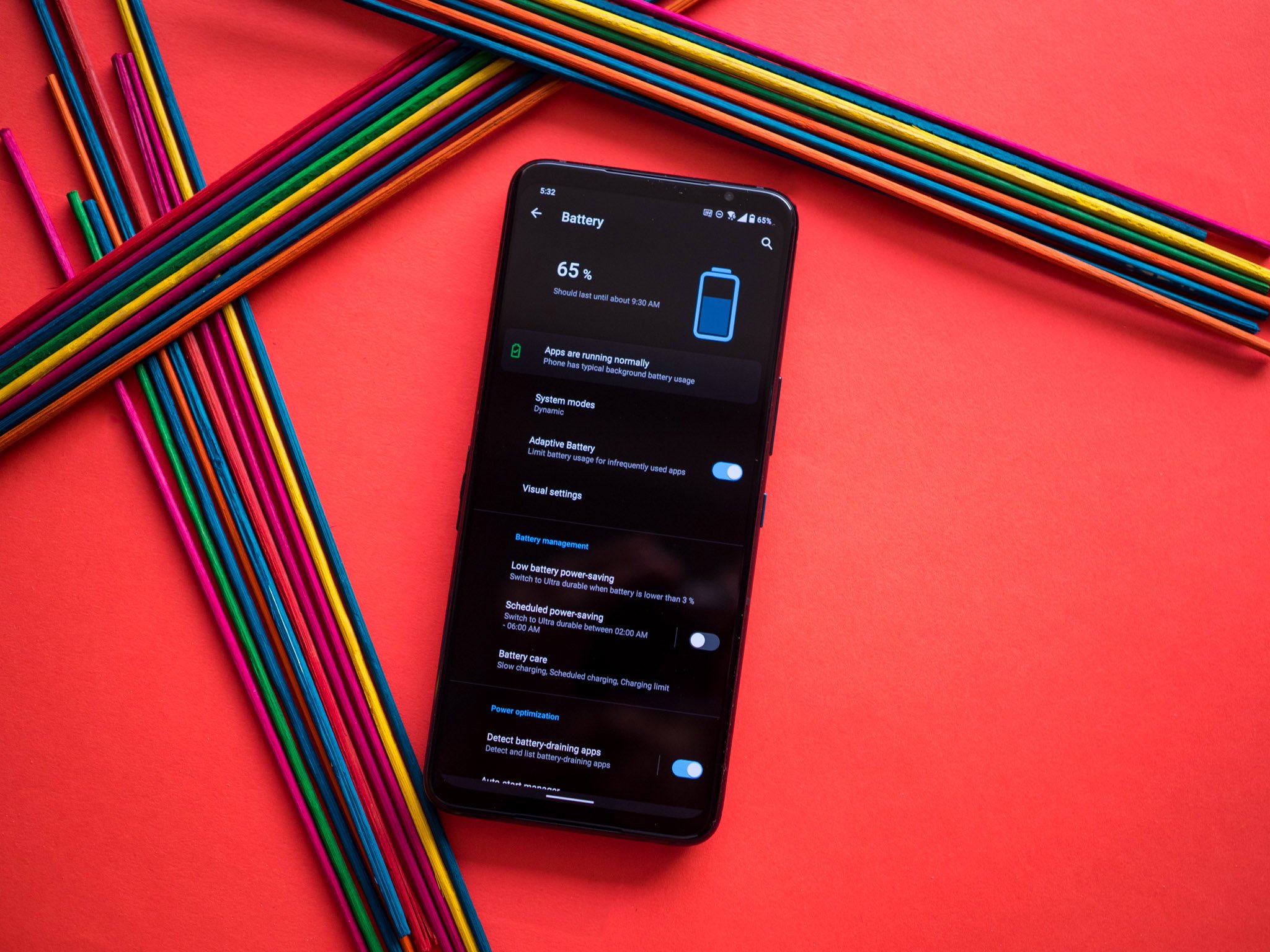
Coming to the battery side of things, the ROG Phone 5 has a 6000mAh battery system that features two 3000mAh cells. The standout is that the phone has 65W fast charging, similar to the
10/03/2021 11:15 AM
Twitter tests full-size images previews in your feed on iOS and Android
10/03/2021 01:28 PM
OnePlus ends esports-focused Fnatic collaboration ahead of OnePlus 9 launch
10/03/2021 03:50 PM
HTC's VIVE Tracker Is Now Smaller + It Has A New Buddy Accessory
10/03/2021 11:32 PM
Sony's highly-rated WH-1000XM3 headphones are back down to $200
10/03/2021 11:45 AM
ASUS' ROG Phone 5 focuses on audio quality for mobile gamers
10/03/2021 11:23 AM
Galaxy Awesome Unpacked event set for March 17 — here's what we might get
10/03/2021 12:15 AM
Instagram Lite promises a full user experience without major compromises
10/03/2021 11:00 AM
Nikon's full-frame Z9 with 8K video will arrive later this year
10/03/2021 08:05 AM
- Comics
- HEALTH
- Libraries & Demo
- Sports Games
- Racing
- Cards & Casino
- Media & Video
- Photography
- Transportation
- Arcade & Action
- Brain & Puzzle
- Social
- Communication
- Casual
- Personalization
- Tools
- Medical
- Weather
- Shopping
- Health & Fitness
- Productivity
- Books & Reference
- Finance
- Entertainment
- Business
- Sports
- Music & Audio
- News & Magazines
- Education
- Lifestyle
- Travel & Local
2014 © US apps and news
